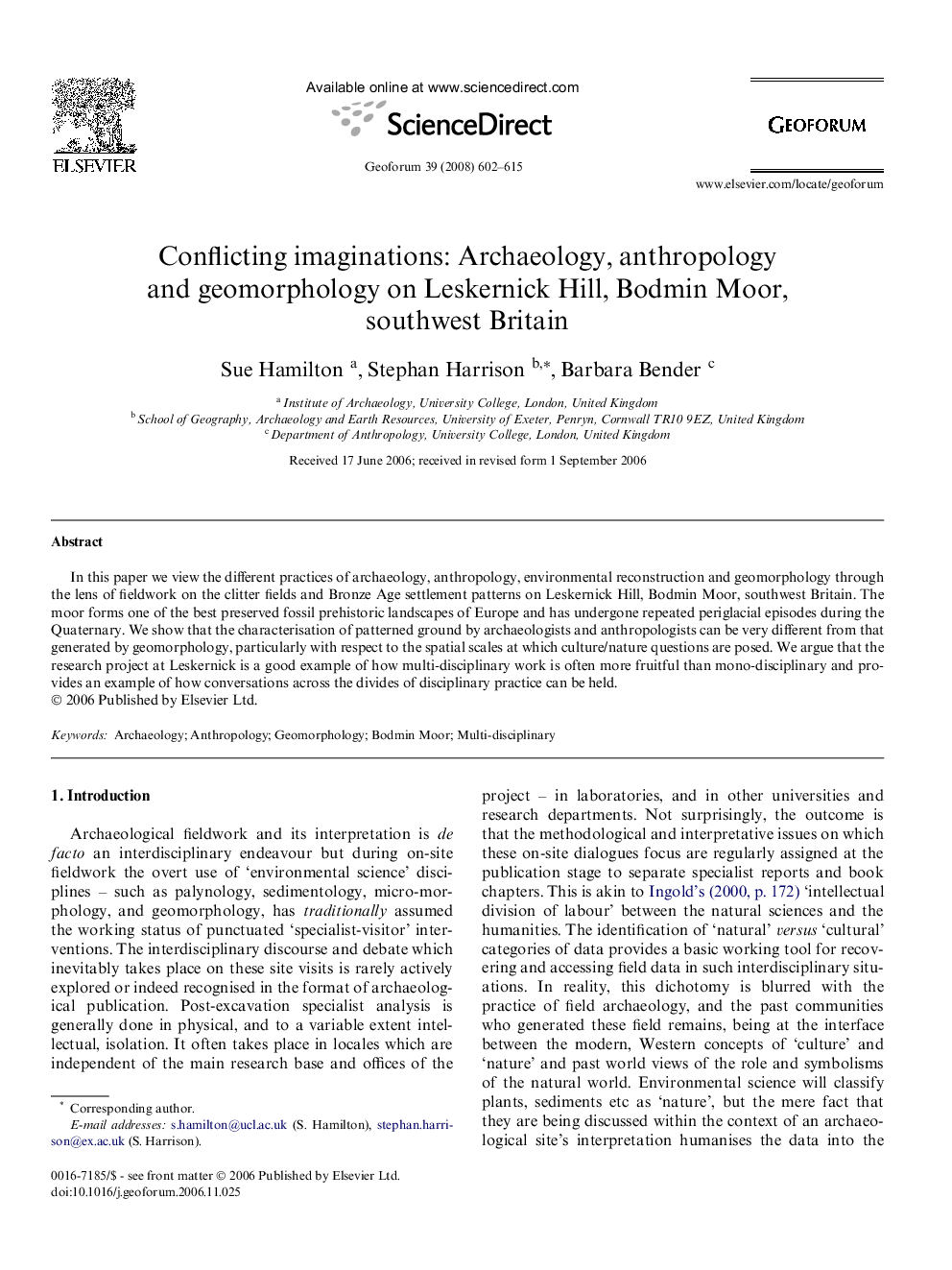| Article ID | Journal | Published Year | Pages | File Type |
|---|---|---|---|---|
| 5074765 | Geoforum | 2008 | 14 Pages |
Abstract
In this paper we view the different practices of archaeology, anthropology, environmental reconstruction and geomorphology through the lens of fieldwork on the clitter fields and Bronze Age settlement patterns on Leskernick Hill, Bodmin Moor, southwest Britain. The moor forms one of the best preserved fossil prehistoric landscapes of Europe and has undergone repeated periglacial episodes during the Quaternary. We show that the characterisation of patterned ground by archaeologists and anthropologists can be very different from that generated by geomorphology, particularly with respect to the spatial scales at which culture/nature questions are posed. We argue that the research project at Leskernick is a good example of how multi-disciplinary work is often more fruitful than mono-disciplinary and provides an example of how conversations across the divides of disciplinary practice can be held.
Related Topics
Social Sciences and Humanities
Economics, Econometrics and Finance
Economics and Econometrics
Authors
Sue Hamilton, Stephan Harrison, Barbara Bender,
